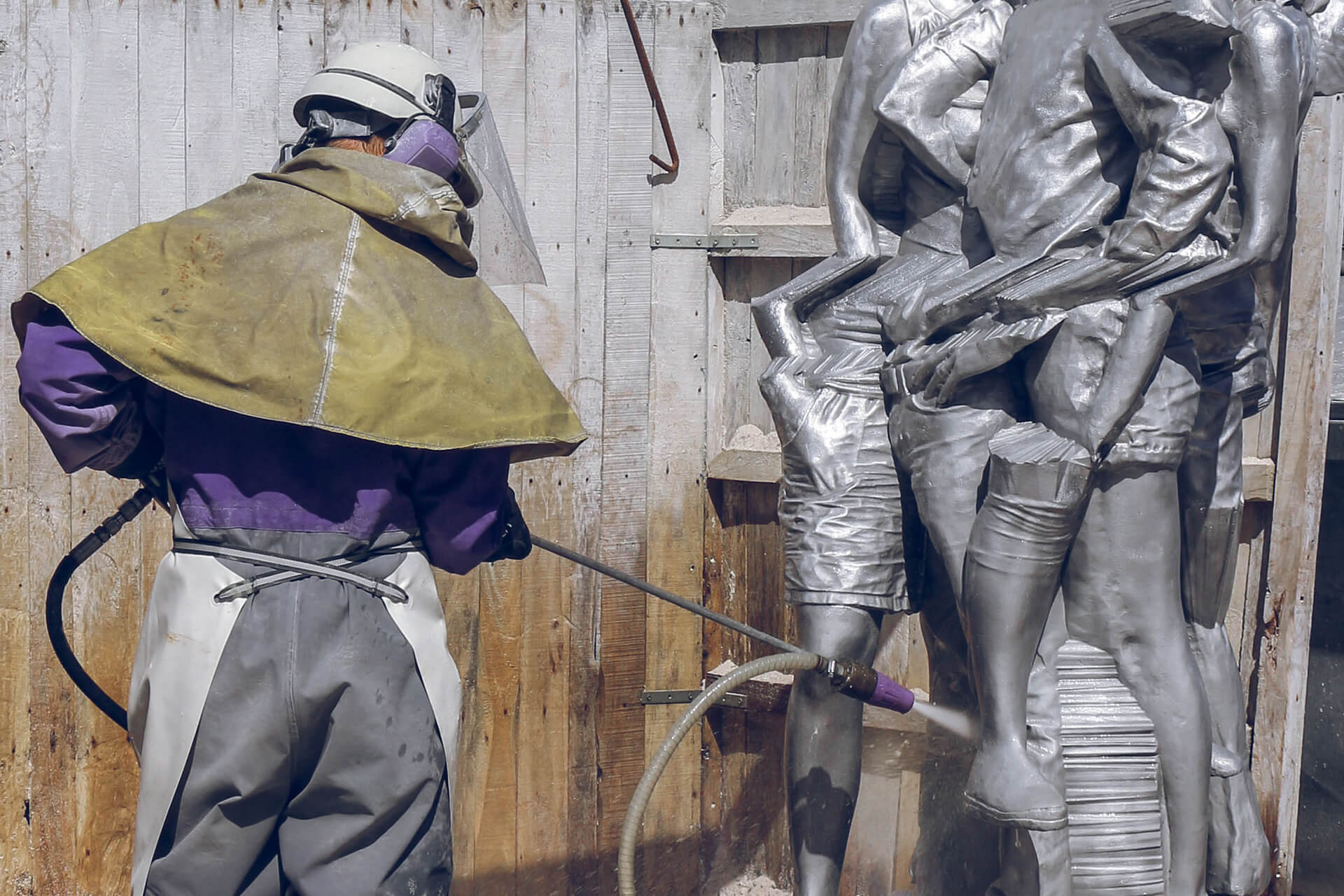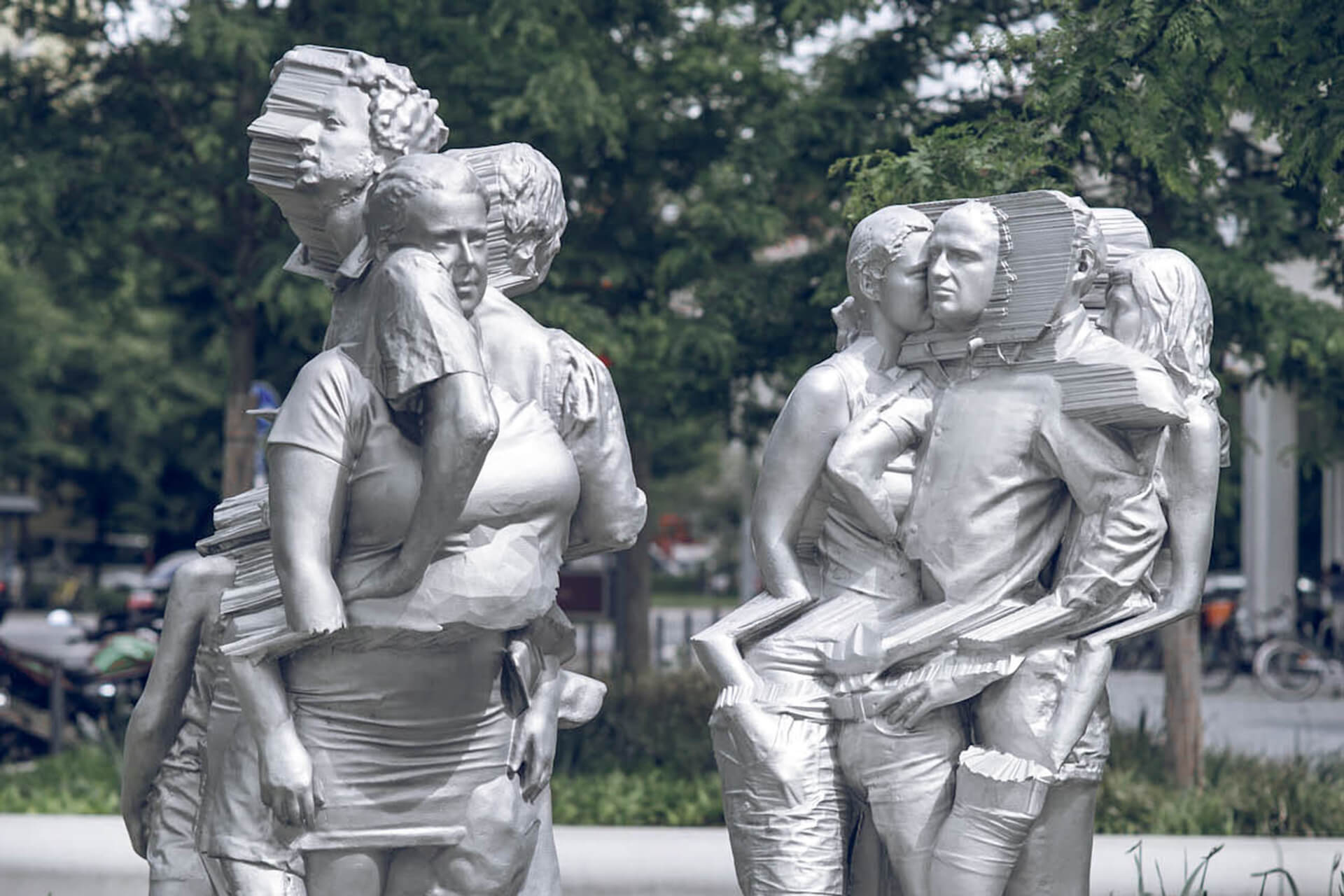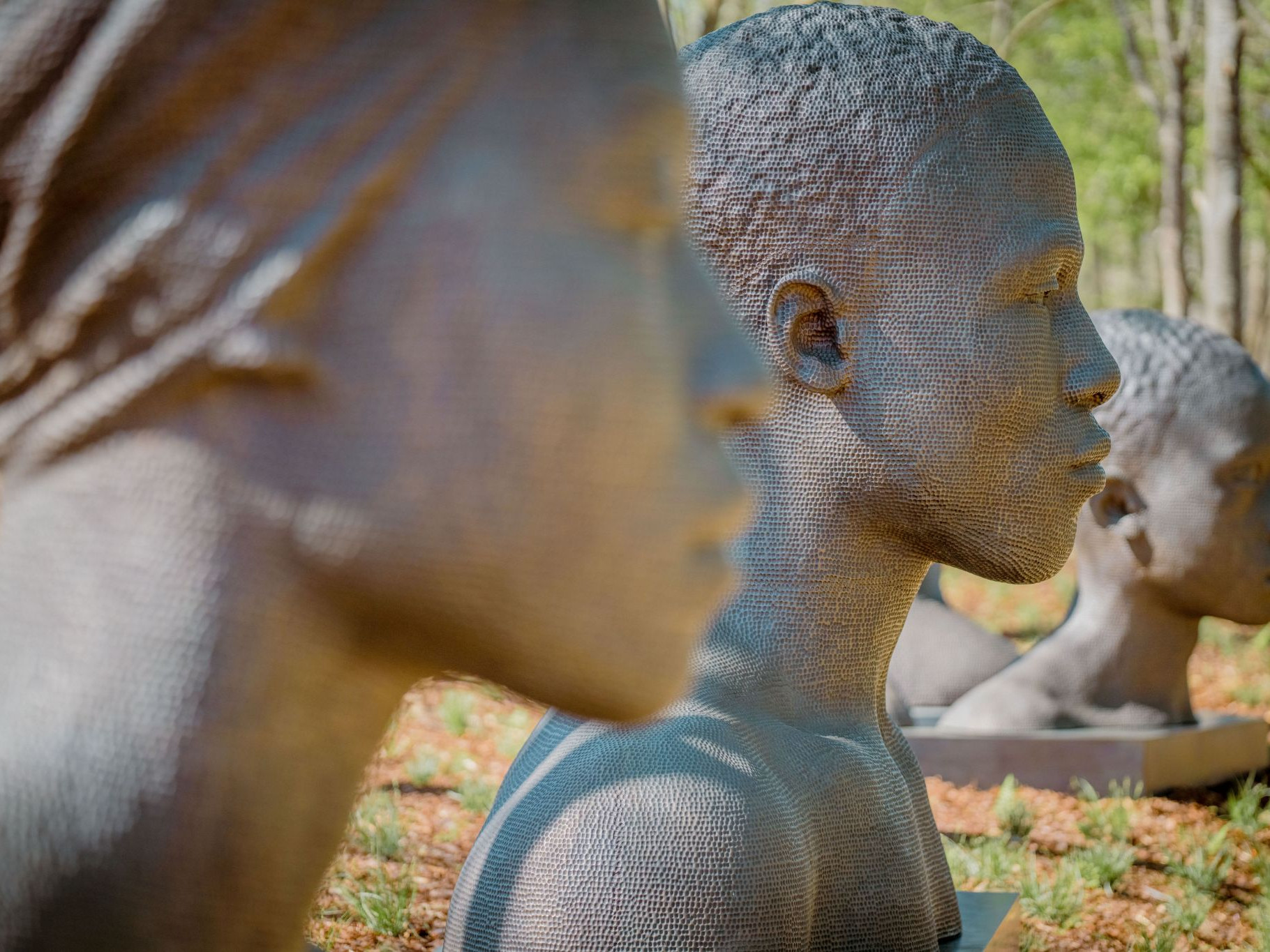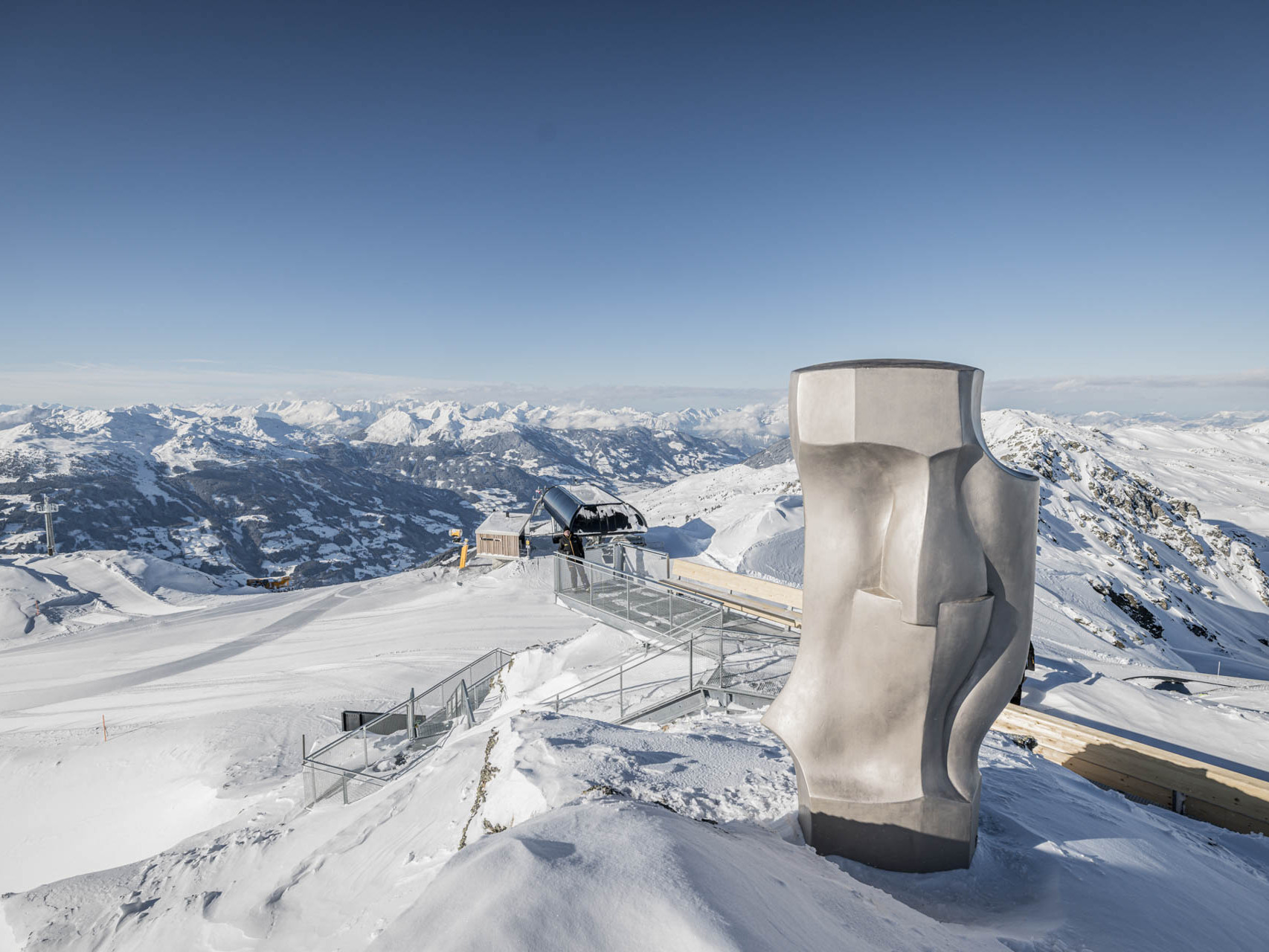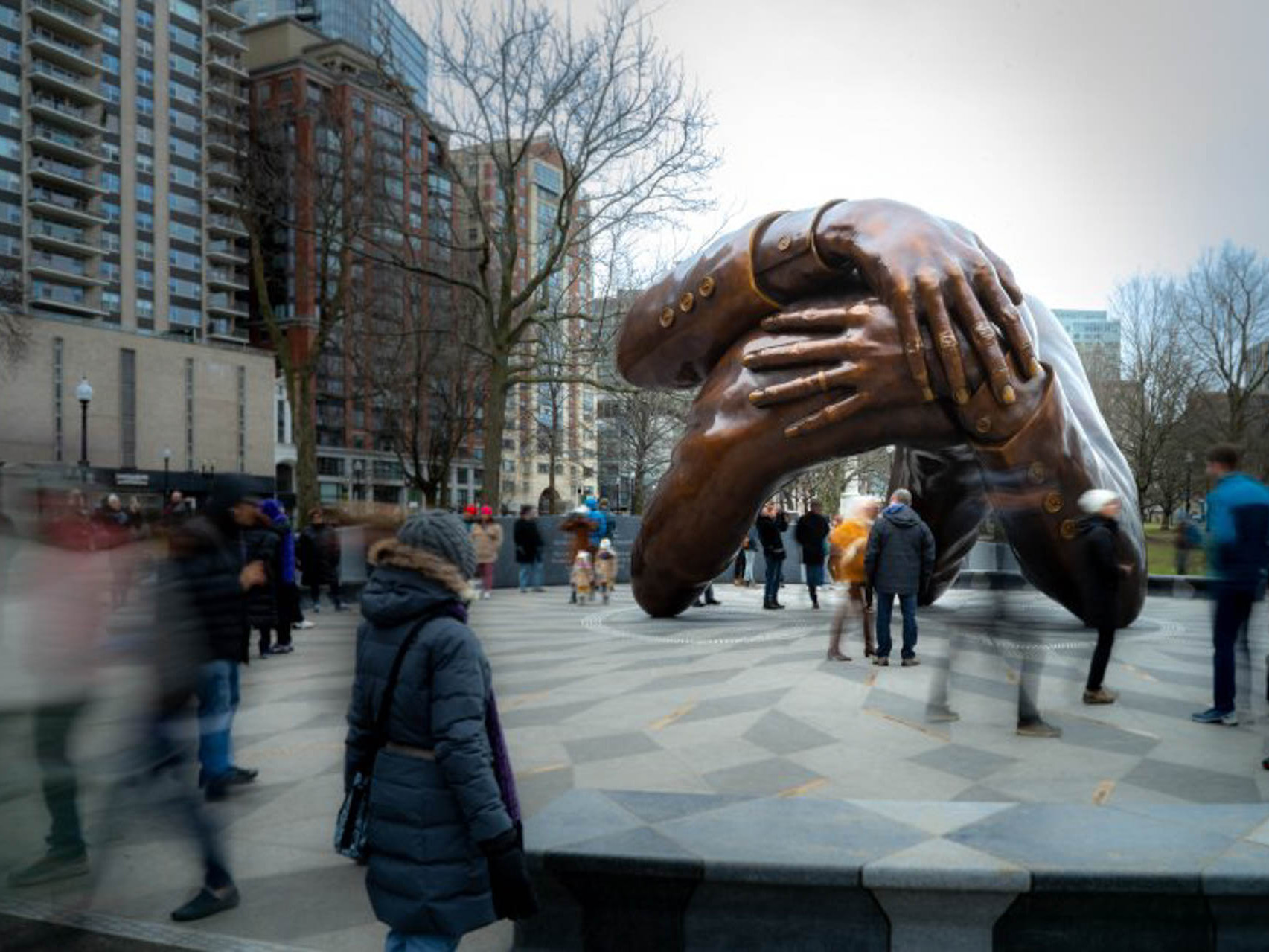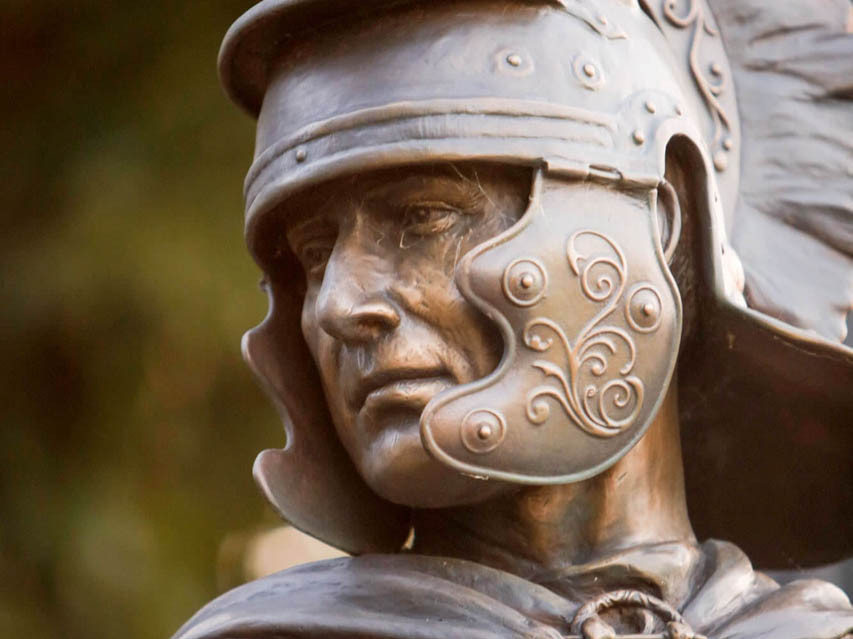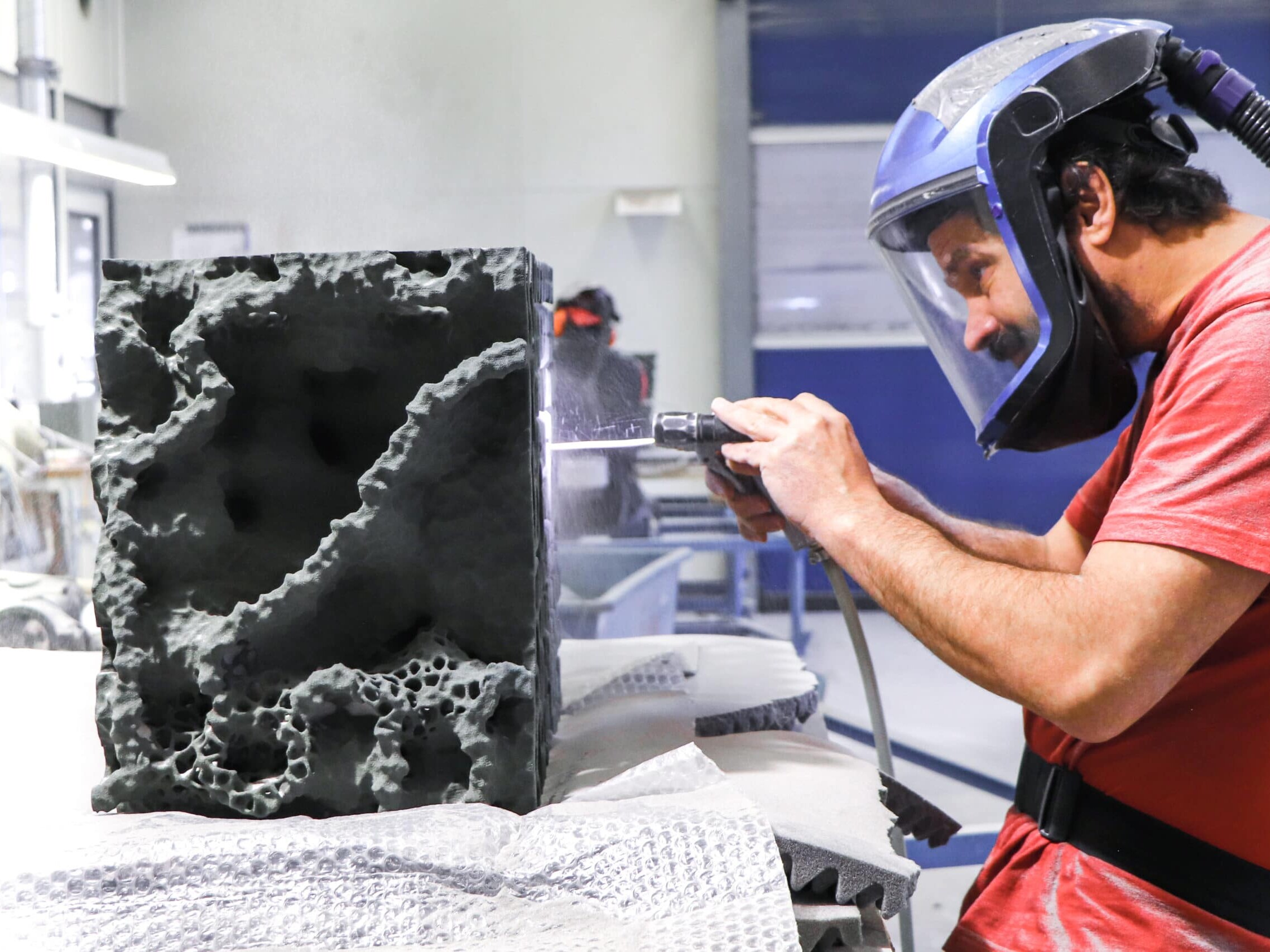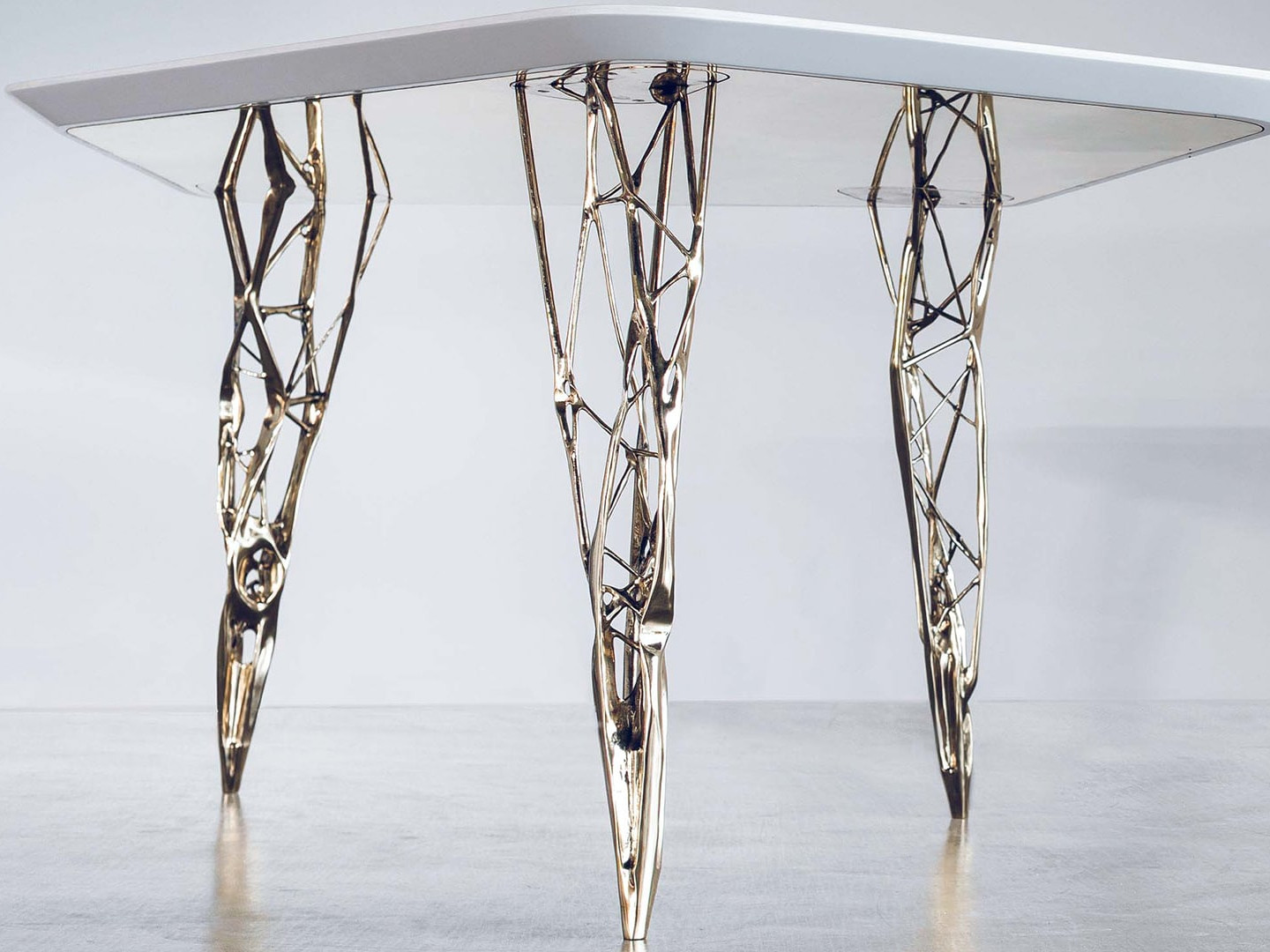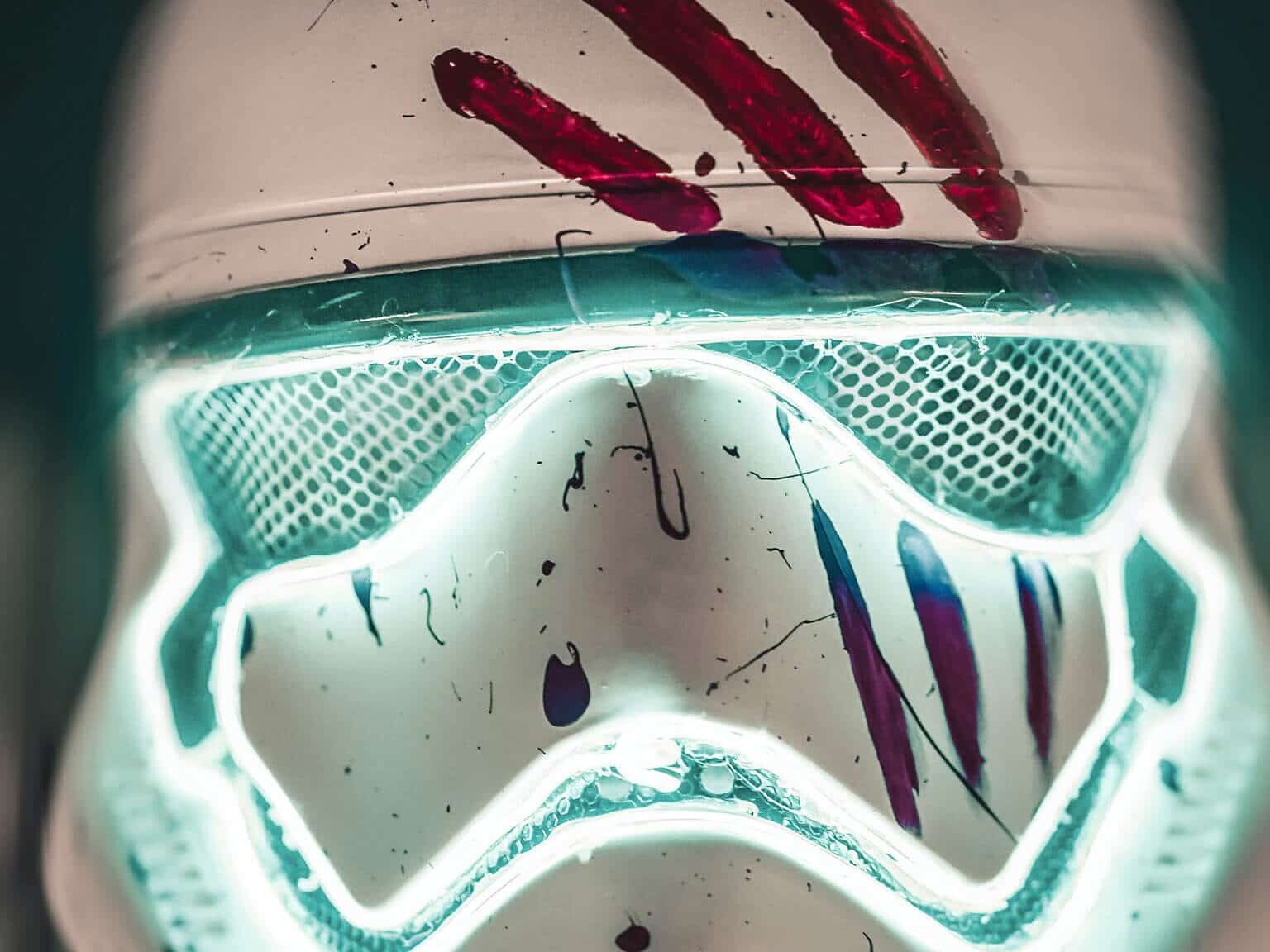- Home
- Case Studies
- Art and Design
- Artistic 3D printing for Munich’s Westpark
Westpark-Clouds Artful 3D printing
Fabian Hess and Mitra Wakil create the Westpark-Clouds. voxeljet prints molds for an aluminum sculpture of a new residential area in Munich.
voxeljet, Friedberg near Augsburg, November 2017 – With “Westpark Clouds”, a life-size sculpture group, Fabian Hesse and Mitra Wakil created an artistic work for a public space in the Munich residential area Westpark. Westpark Clouds shows a two-part group of figures, developed from the manipulated and processed 3D scans of the newly recruited residents.
First, individual scans of the residents were produced using 3D scanning. In the next step, the artists placed the scans on top of each other. In these overlaps, the different scans of the individual residents cross over into each other, so that their boundaries are no longer clearly discernible. This resulted in a visual template, which Hesse and Wakil artistically edited and designed using 3D modelling programs.
Hesse and Wakil then printed the 10 molds needed for the sculpture at voxeljet on their VX4000 3D printing system with a building space of 4 x 2 x 1 m in quartz sand to finally cast the entire sculpture in aluminum.
In Westpark Clouds, Fabian Hesse and Mitra Wakil address the tension between individual and collective, similar to Auguste Rodin’s sculpture group “The Citizens of Calais”, which is regarded as the first true bourgeois monument of European modernity. By establishing two main groupings, Hesse and Wakil dissolve the hierarchy between the viewer and the work by renouncing a central view or main character just like the sculpture by Rodin. Hesse and Wakil call this a “democratization of the sculpture group”. The viewer himself becomes a part of the work by moving and repositioning himself in order to grasp the entire sculpture.
3D printing in art still in their infancy
Hesse: “For some time now, artists have been using the possibilities of 3D rendering and 3D printing. However, we will still experience many fantastic innovations in this area. This method of producing art is still in its infancy, comparable to the beginnings of photography. However really spectacular results, completely new approaches and communities in contemporary art are emerging continuously.”
The challenge is to "Think reality differenty" with modern 3D modelling
Hesse and Wakil integrated so-called “glitches” into their work by incorporating duplications, overlays, blanks and misinterpretations, i.e. structures that had already been created in the technical scanning process. Perfection of the digital surface is not the main focus of Hesse and Wakil. Instead they develop a playful approach to coincidences, noise and technical errors. Also, the artistic duo is not interested in duplicating or depicting nature, but rather tries to “think reality differently”. The result is two groups of sculptures whose individual figures are shifted and combined to form a kind of common supernear, but always remain as individuals. All this is accomplished in a place, whose potentials have yet to be developed and defined. Westpark Cloud reflects an intimacy through the proximity, fusion and superimposition of the bodies, but at the same time places value on the self-sufficiency of the individual figures. In the sculpture, as well as in the flat district, a contradictory moment of social communion and distanced anonymity is created in equal measure.
The decision to work with the 3D-scan and 3D-printing method is due to the desire, to develop the sculpture in participatory exchange with the inhabitants of the newly emerging district. The “possible” scan fields envision the complex, visual and ordering strategies of such a surveying technique : The process of pictorial assembling questions the moment of technical recording and its promise of reality and representation.
Webinar: Art Casting
In this webinar, the renowned German art foundry, Strassacker, will tell all about PMMA 3D printing technology and it’s applications in art casting.
Hyperrealistic sculptural elements thanks to 3D printing technology from voxeljet
From the high-resolution 3D scans, hyper-realistic sculpture elements were then created with voxeljet´s Binder Jetting 3D printing technology.
For each sculpture, five individual mold elements were printed. After the casting process, the individual castings were welded together. The use of 3D printing in the production process of the sculpture opened up many possibilities for sculptural work for the artists. Although the artists were able to digitally process the sculptures, they wanted to do further changes to the individual parts.
In order to process the individual molds, negative silicone molds were printed, which were finally used to produce wax models. The wax models made it easier for the two artists to make changes according to their ideas by hand. This way, coincidences, fluctuations, irregularities and breaks could be smoothed out. Before the individual parts were casted, a ceramic shell had to be built which included the gating system to ideally guide the hot aluminum into the mold. The decision to use aluminum was a conscious step away from other more traditional and historically charged casting metals. In addition, the material makes the sculpture appear much more fragile and almost unreal due to its brightness and light shine, and thus gives the kaleidoscopic shift or nesting of the Westpark Clouds its own airiness.
Further Case Studies
Bronze-cast sculptures produced with 3D printing
In the Freedom Monument Sculpture Park, there are three bronze sculptures by artist Shaleigha D'Clark, created using 3D printing
3D-printed sculptures at 2500 metres
At 2,500 metres in the Tyrolean Alps, these 3D-printed sculptures enjoy a special view. They are the fulfilment of a long-held dream of Tyrolean artist Magnus Pöhacker.
3D printing patterns for large-scale sculpting
The Embrace is a public artwork in Boston to honor and remember the life of Martin Luther King and his wife Coretta Scott King. The sculpture was created with 3D PMMA printing and investment casting
58 sculptures cast in bronze visualize the Way of the Cross of Jesus in Nebraska, USA. The unique works of art were created by famous artists using a combination of 3D printing, investment casting and bronze casting.
Functional Architecture with 3D Printing
The Mersitem Wall is a best practice example of how functional and sustainable architecture can be created with 3D printing.
3D printing for sustainable architecture
Singapore's AIRLAB uses these table legs to show how architecture can be made more sustainable and functional at the same time.
3D printing the future of prop manufacturing
Using 3D printing to create cost-effective, realistic movie props.
3D Printing Solutions
Would you like to learn more about voxeljet and 3D printing? Click here for the entire voxeljet solution portfolio.



















